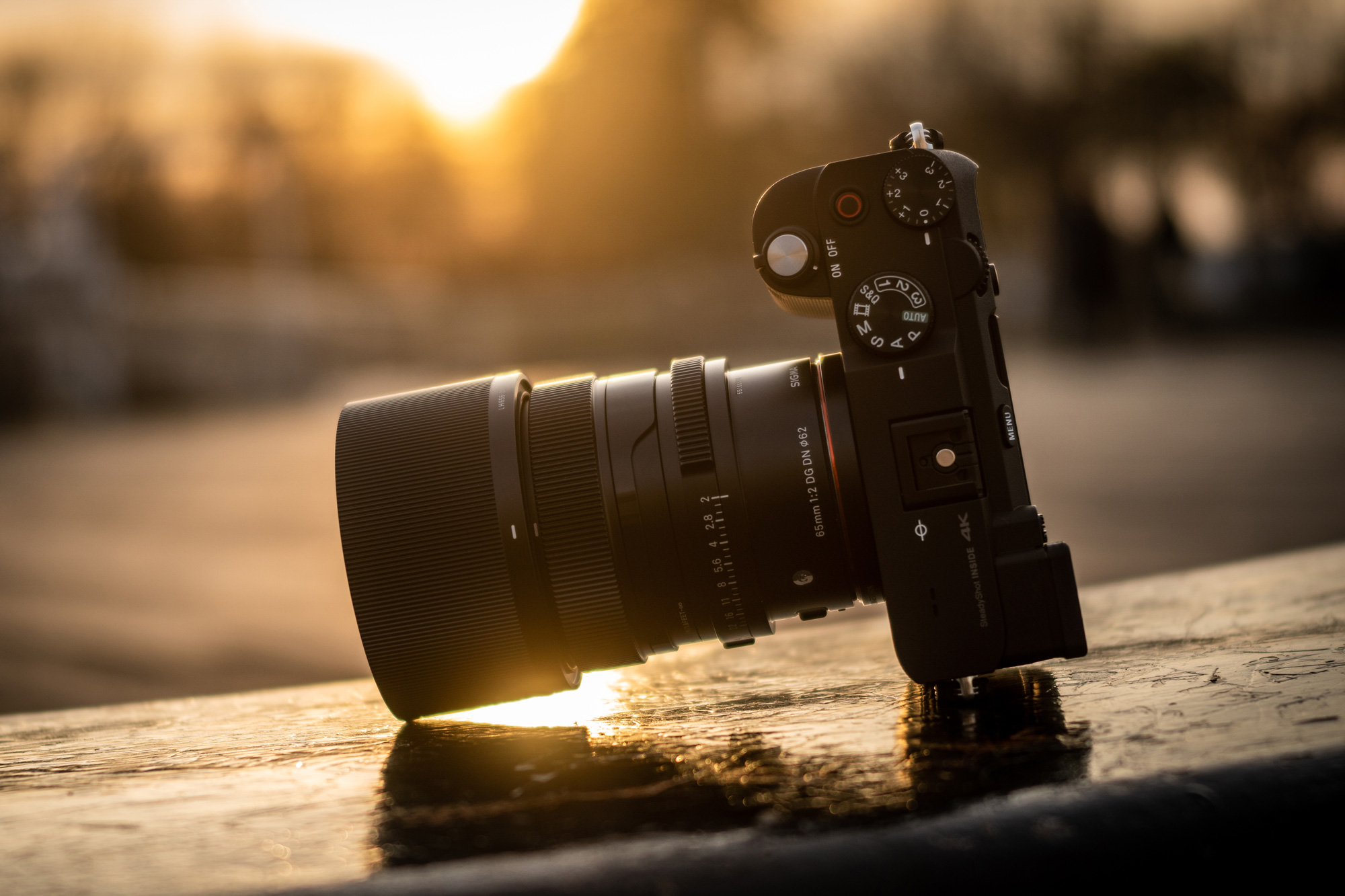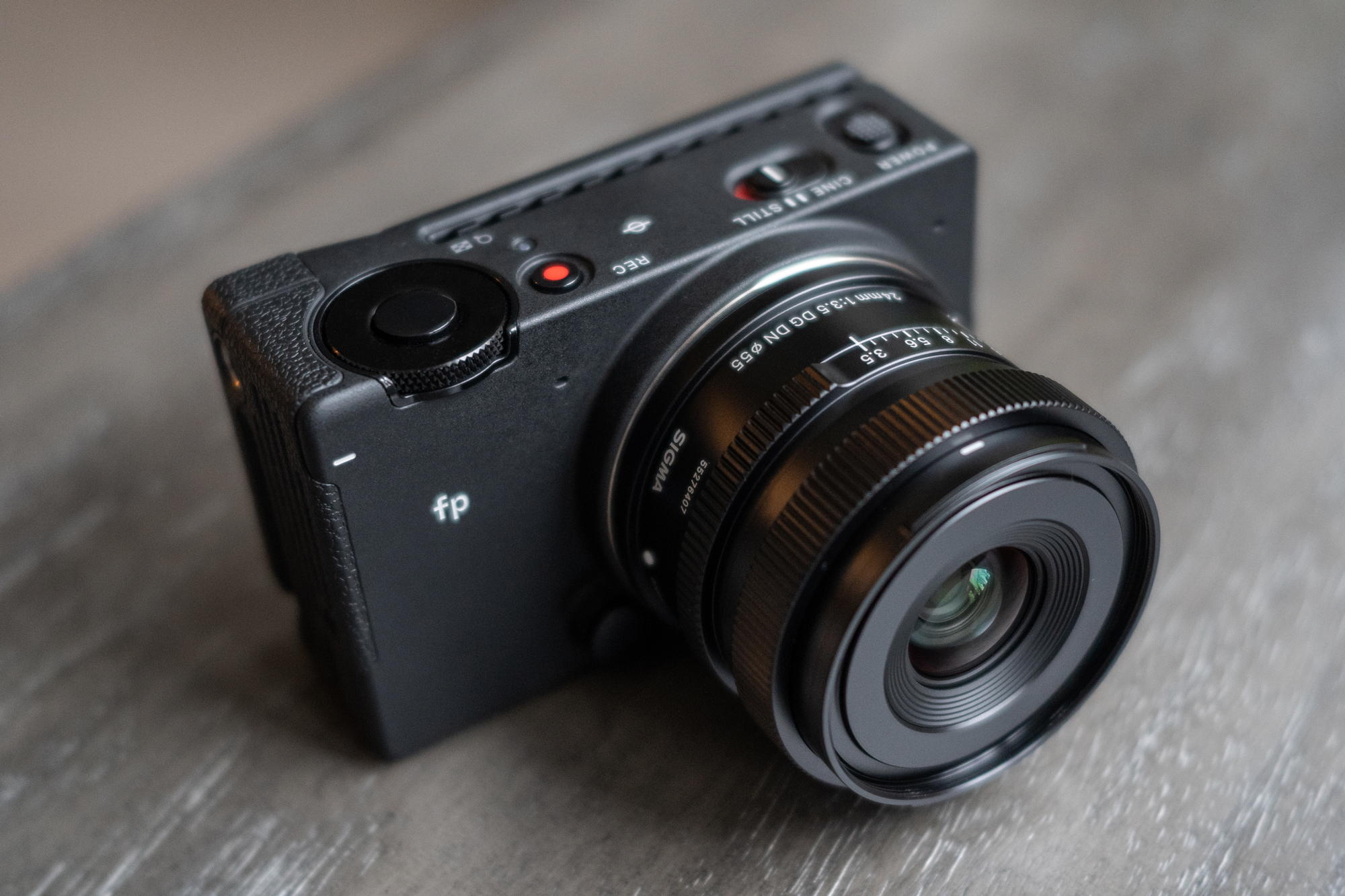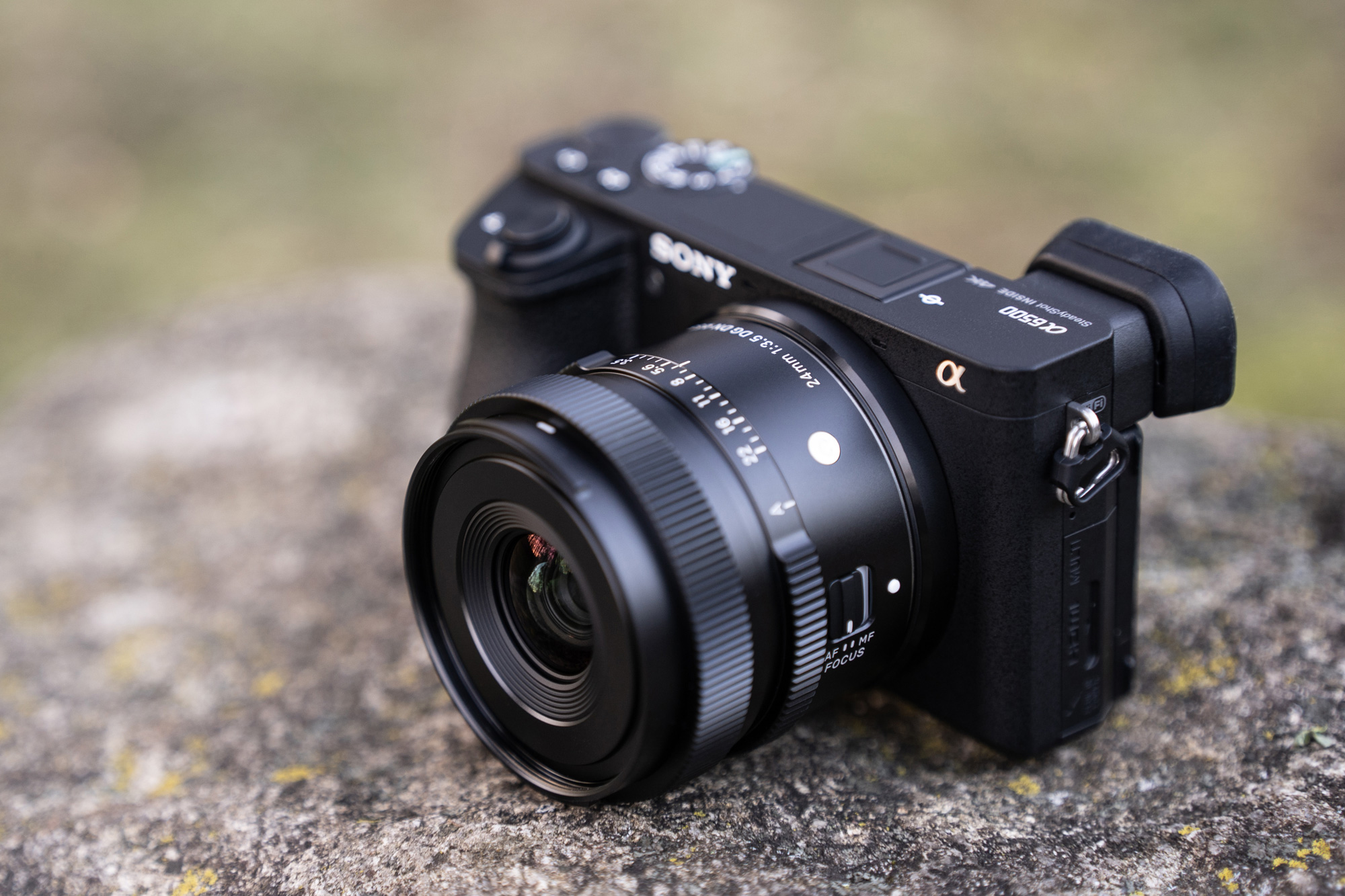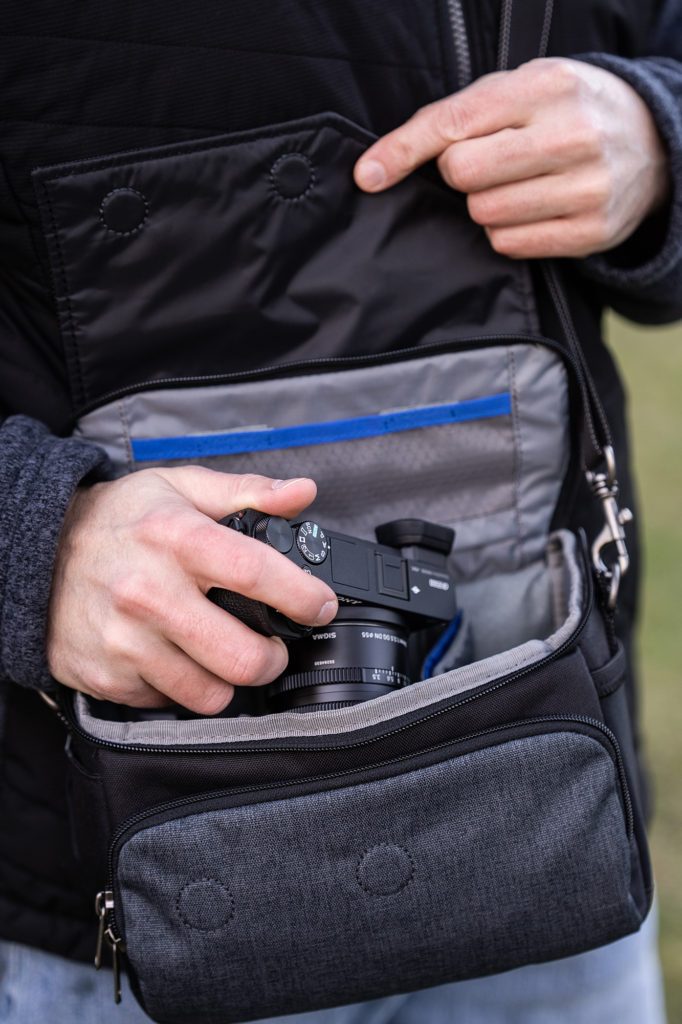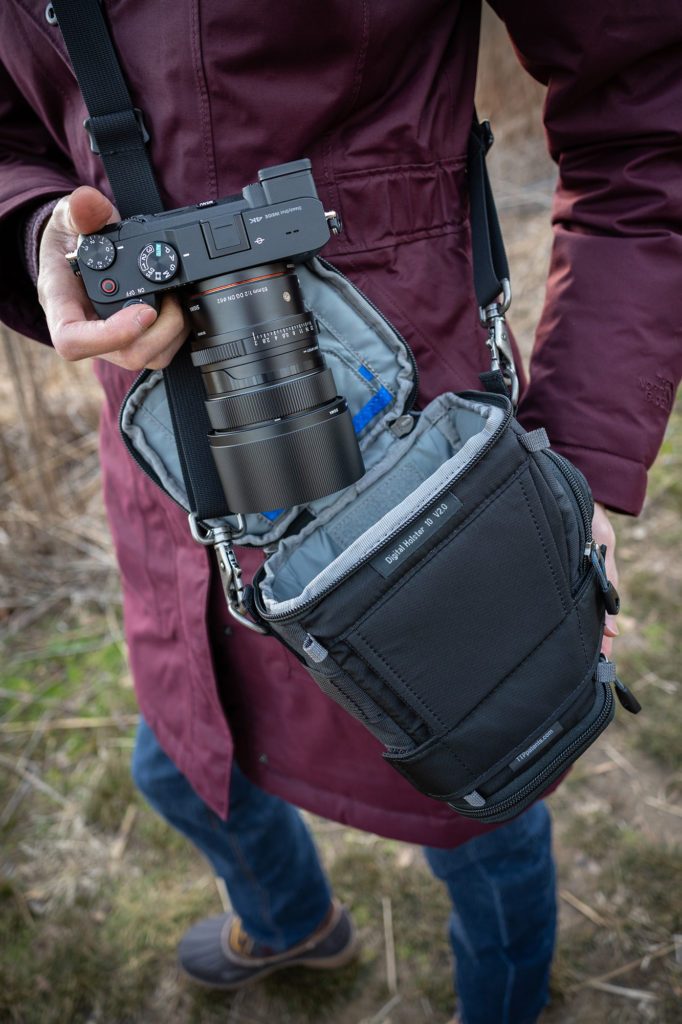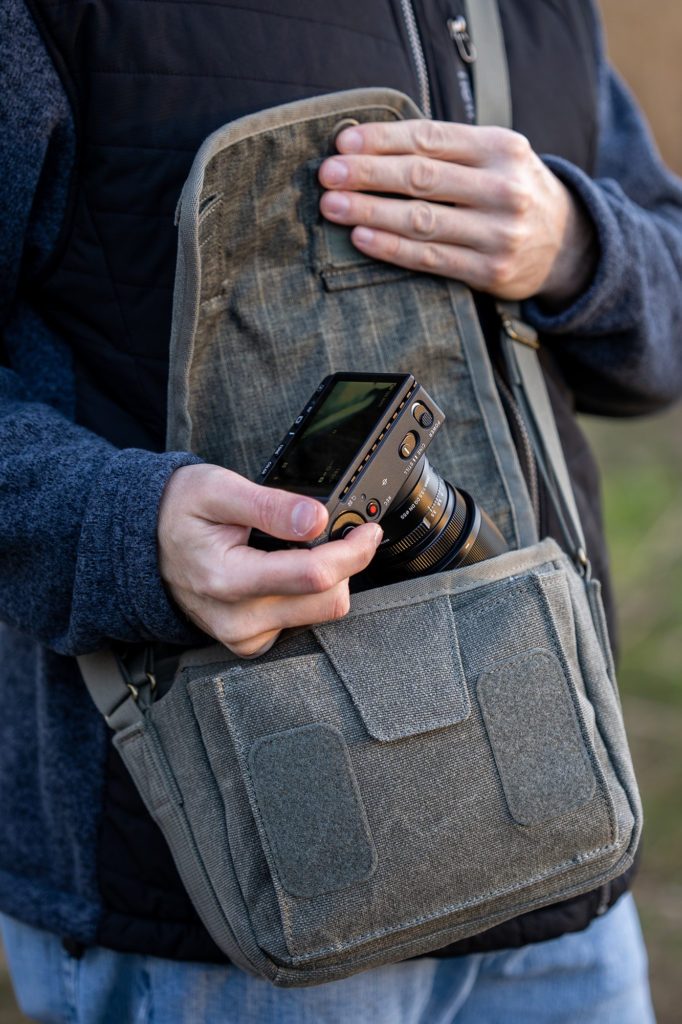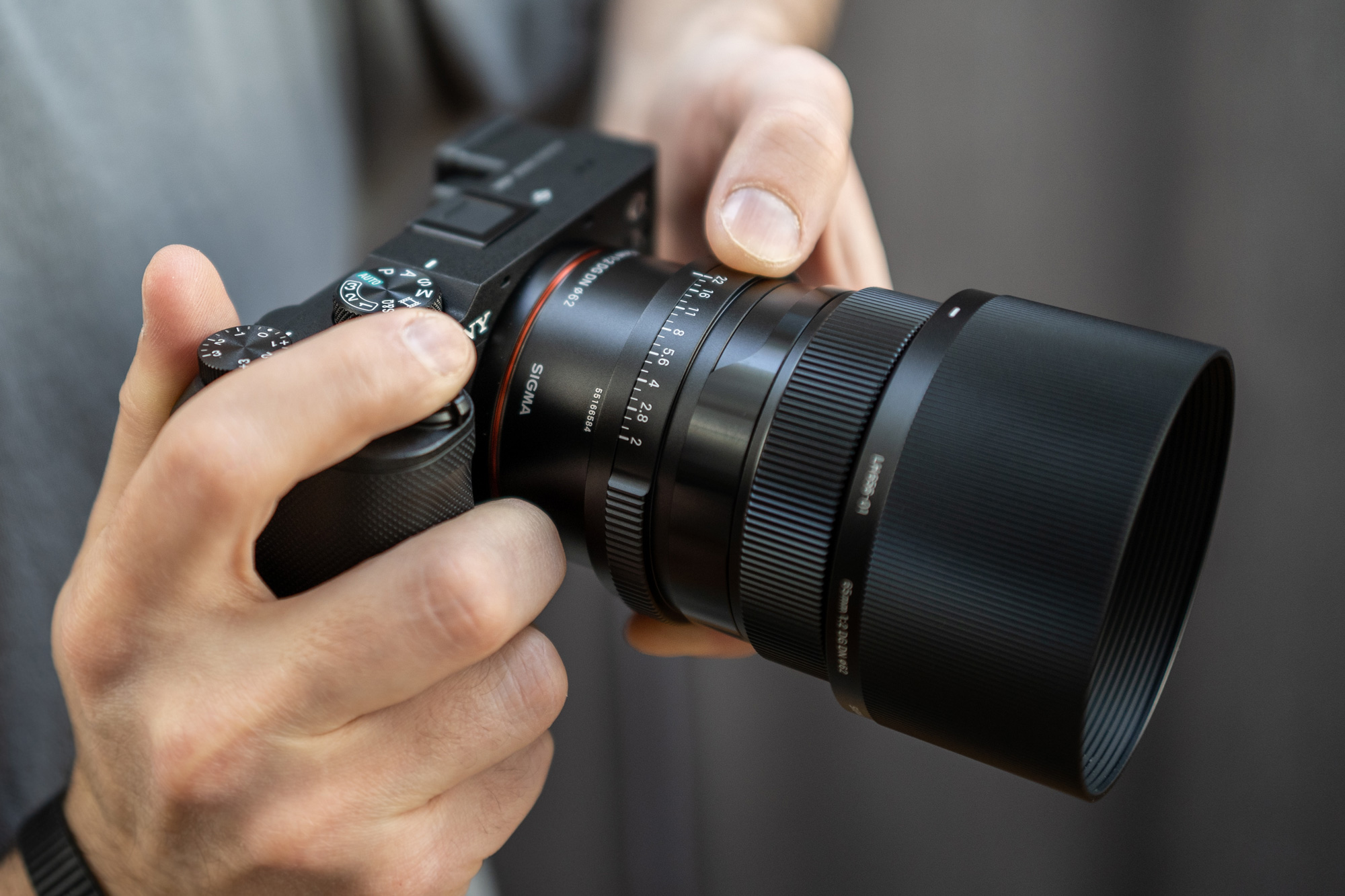Today’s mirrorless cameras offer many technological benefits — blazing fast sensor-based autofocus, live exposure preview, seamless video capability — but perhaps the most obvious advantage is often the most overlooked. Mirrorless cameras, even some full-frame models, pack incredible performance into truly compact, lightweight frames that are just begging for some equally compact, high-quality optics to go along with them. Enter the SIGMA I series.

The SIGMA I series — that’s just an official nickname, by the way, not a separate lens line — was developed to offer photographers something more than a typical compact prime. With refined details like an all-metal body, a manual aperture ring, and a precision-cut metal lens hood, I series lenses make good on the “smaller and better” promise that mirrorless converts have been looking forward to for years.
Exceptional Portability with E-Mount and L-Mount Cameras
The SIGMA I series — which currently includes the 24mm F3.5 DG DN Contemporary, 35mm F2 DG DN Contemporary, 45mm F2.8 DG DN Contemporary, and 65mm F2 DG DN Contemporary — incorporates a noticeably different design philosophy. SIGMA is often recognized for brilliant but rather large optics like the 105mm F1.4 DG HSM Art (The Bokeh Master, for the uninitiated) or the mighty 60-600mm DG OS HSM Sports. But for the I series, SIGMA has made portability a specific priority.

With any one of the I series lenses attached, almost any compatible mirrorless camera (E-mount or L-mount) can be easily carried on a strap, in a small shoulder bag, a purse, even a jacket pocket. Full-frame models like the SIGMA fp, Sony A7C and Leica SL2 are remarkably svelte, and crop-sensor bodies like Sony’s A6000 series make the overall package even more compact.
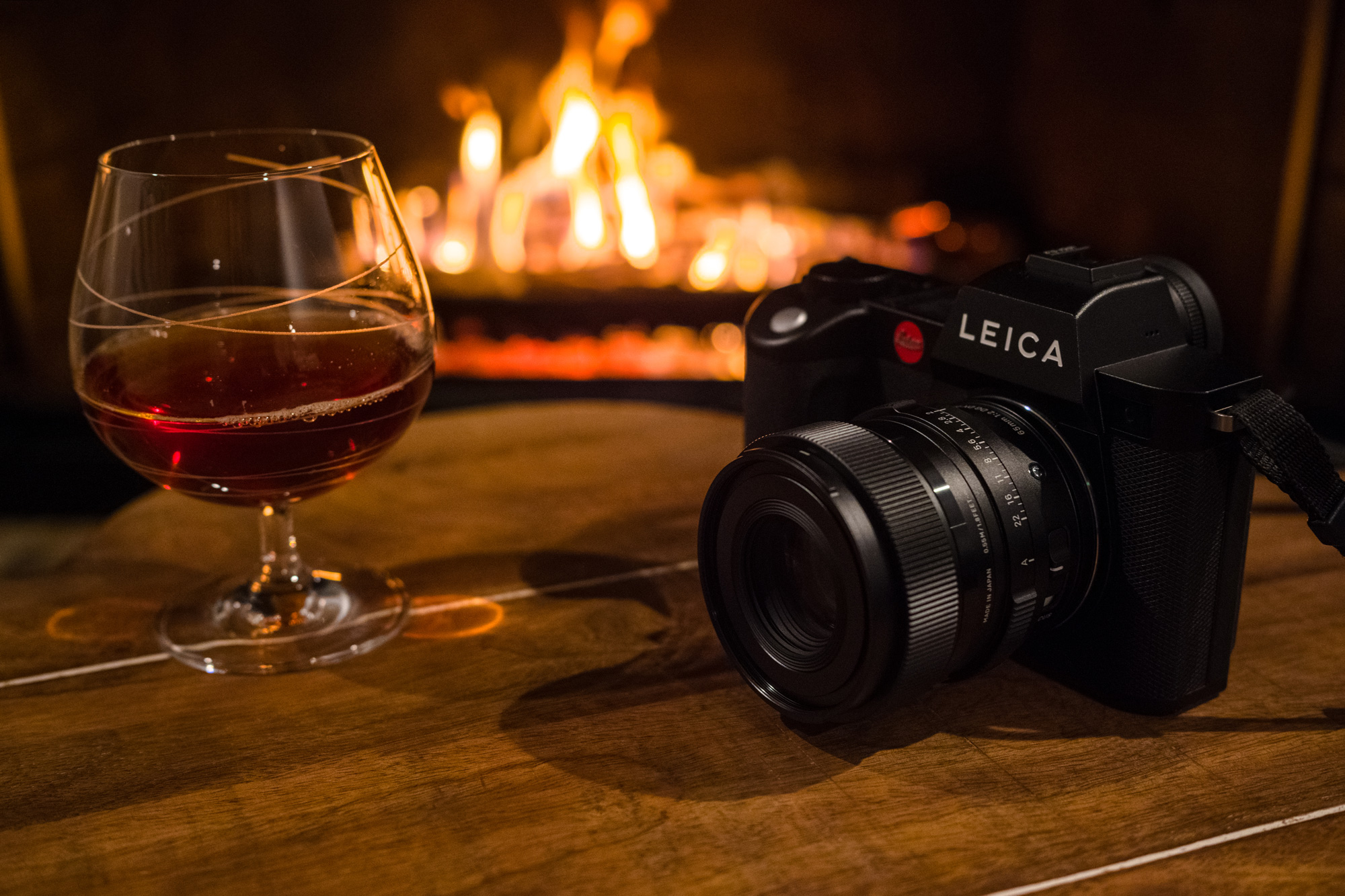
This one-camera, one-lens method lends itself to the sort of everyday photography that often ends up captured on a (gasp!) smartphone. Whether on the street, at a party, traveling along a scenic coastline, or just hanging around the house, a mirrorless camera with a single I series lens mounted to it makes it easier to capture memories as they happen in much more detail.
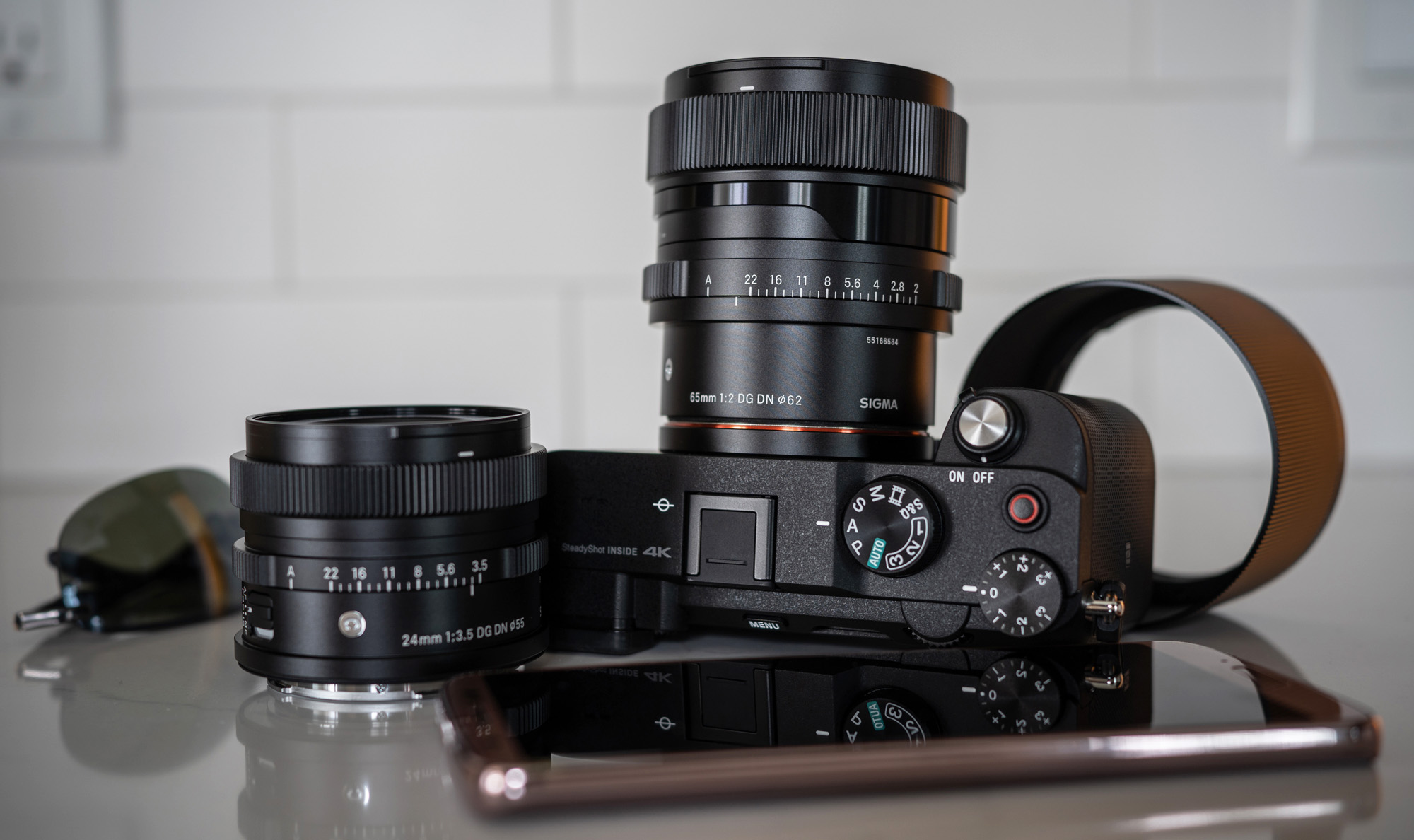
I series lenses don’t take up much space, whether in your hands or on the kitchen counter.
Of course, where there’s one lens, there’s usually (always) more, and with the I series, you really don’t have to worry about finding extra space for your gear. Compact lenses and camera bodies like those mentioned above can be packed neatly into almost any small camera bag, like these sleek models from our friends at Think Tank.
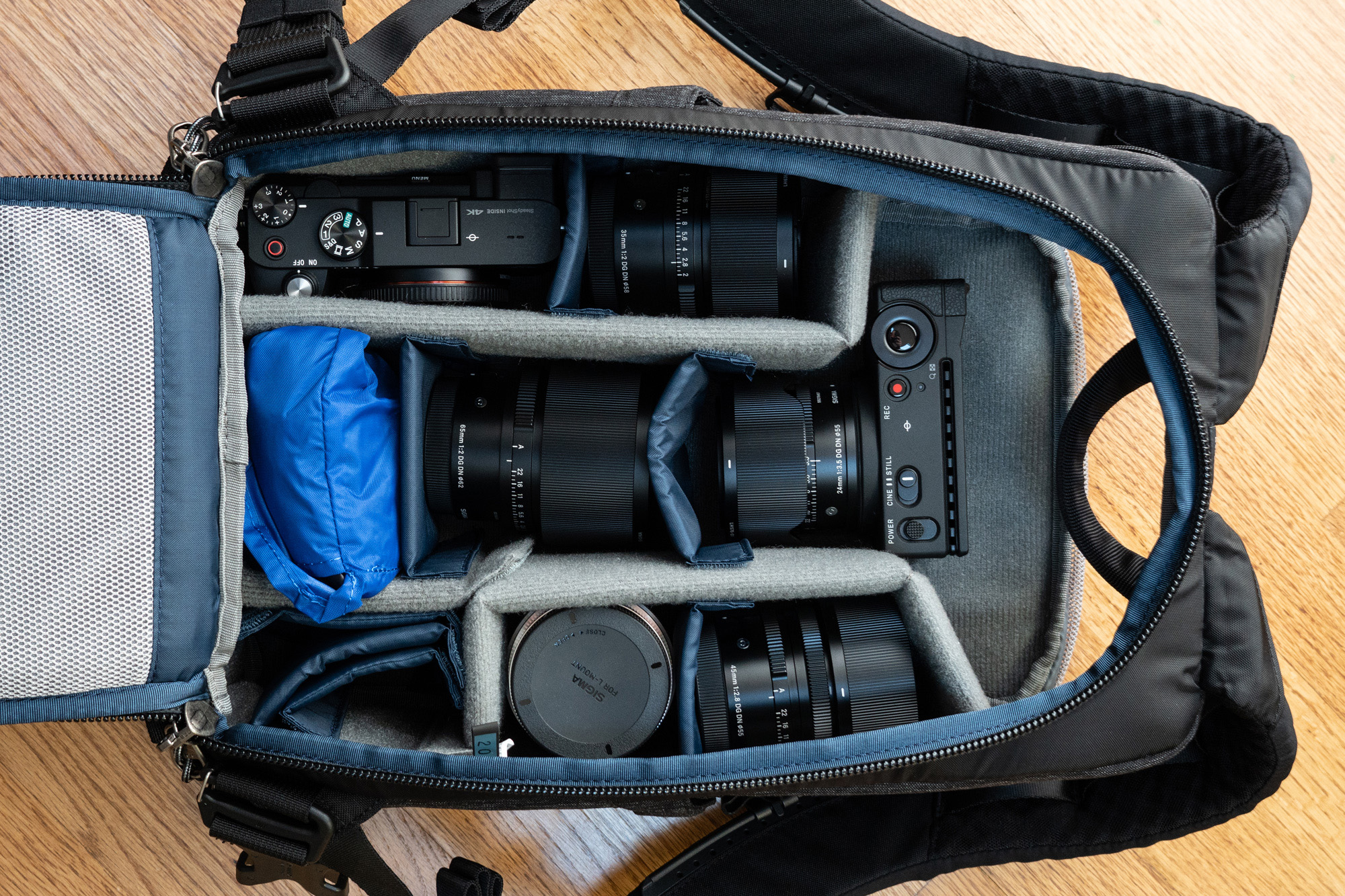
And even if you don’t have a fancy, padded camera bag, part of the I series’ portability is its durability. Those all-metal barrels and hoods aren’t just for show! Whether attached to a camera or sitting in a backpack next to a set of keys and some loose change, these lenses are designed to be with you for the long haul.
Enhance Your Sony, Leica, Panasonic or SIGMA fp Camera with Stunning Looks
One of the unintentional bonuses of mirrorless technology is that you can adapt almost any old manual lens from nearly any camera system, and it will actually work. Now while many photographers will tell you they appreciate the character of an old piece of glass, or that they actually like the hazy quality of 50-year-old fungus, let’s get real here… we like old, metal lenses because they look cool!
In designing the I series lenses, SIGMA sought to strike a balance between the heavy-duty, mechanical lenses of yore with the sleek, technologically-advanced gear of today. Inspired in part by our own Cine lenses, the matte black, all-metal outer surface and rugged-yet-simple design complements any modern camera, lending it a bit of retro charm that helps it stand out from the crowd.

But these lenses have been engineered to provide more than just aesthetic appeal. The I series aims to give users a more “connected” feeling with a number of physical design touches. For example, the lenses’ manual aperture ring, focus ring and even the lens hood all feature precision cut grooves for a unique tactile experience. The 35mm F2 and 65mm F2 also feature “arc” style focus mode switches, making them even more pleasant to use.
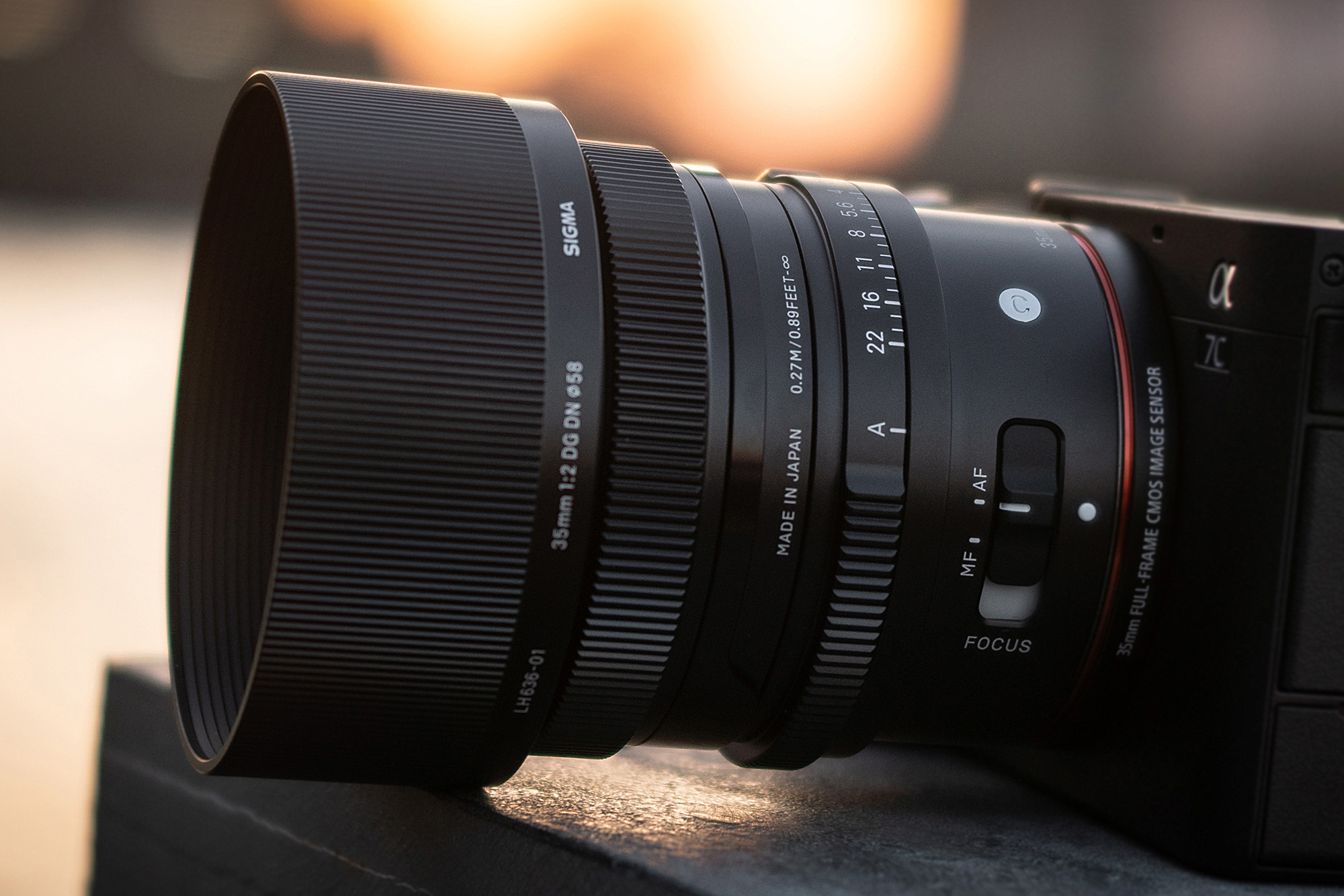
And then there’s the magnetic lens caps. They’re just so… nice. Granted, a magnetic thing that sticks to a metal thing is not groundbreaking technology, but man, does it feel great to pop them on and off the lens for hours on end. Seriously, if you need to relieve stress, there’s something positively zen about these caps, which are included with all I series lenses except the older 45mm F2.8. And if the thought of losing your nice magnetic lens cap further stresses you out, never fear… there’s even an optional clip-on cap holder, perfect for the photographer on the go!
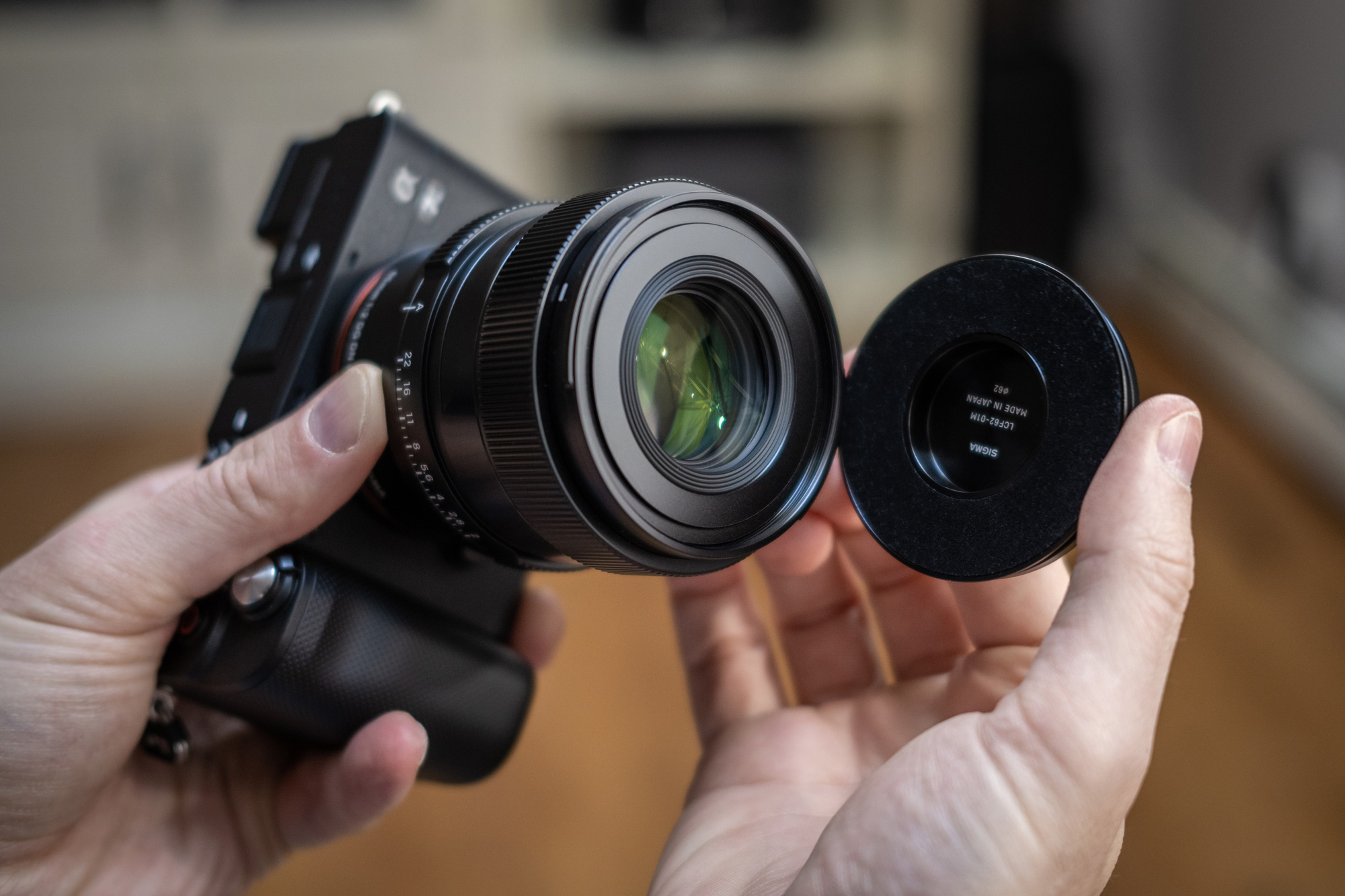
Outstanding Optical Performance, Fully Compatible with Eye AF
Compact size and stylish looks are all well and good, but if the performance doesn’t make the grade, then what is a lens but an expensive paperweight with a bunch of mysterious little numbers on it? Not to worry! SIGMA I series lenses are built to rigorous standards in the imaging department as well, with brilliant optics all around for impressive results with any mirrorless camera.
Every I series lens is 100% compatible with advanced autofocus functions like real-time tracking and eye AF, with a stepping motor for smooth, instant response. The aperture ring provides the flexibility to choose “auto” or a specific f-stop, which is especially handy for smaller cameras that don’t have two easily-accessible control dials. And the focus ring provides smooth operation and exceptionally fine control when focusing manually.
Optical performance is impressive as well throughout the series. In particular, the 35mm F2 DG DN Contemporary and 65mm F2 DG DN Contemporary have been shown to exhibit sharpness on par with our 35mm F1.4 Art and 50mm F1.4 Art lenses respectively (at equal apertures), a pretty remarkable feat for such small lenses. The 24mm F3.5 DG DN Contemporary, meanwhile, is designed to give you a wide, distortion-free angle of view that fits virtually anywhere, and yep, it’s pretty darn sharp as well.
24mm F3.5 DG DN | Contemporary






35mm F2 DG DN | Contemporary






65mm F2 DG DN | Contemporary









The 45mm F2.8 DG DN Contemporary — which is essentially the I series forerunner — was designed to offer different optical characteristics for a more classic look, reminiscent of the 50mm primes that have been the standard of excellence for decades. It’s no wonder this little gem has become a favorite everyday lens for so many mirrorless shooters!
45mm F2.8 DG DN | Contemporary






An Excellent Choice for Sony, Leica, Lumix & SIGMA Full-Frame Mirrorless Cameras
Mirrorless interchangeable lens cameras have certainly come a long way since the late-2000s, with megapixel counts, displays, autofocus, wireless connectivity and video capability all progressing by leaps and bounds. But while cameras seem to evolve on a daily basis, the allure of a compact, sharp, well-designed, durable prime lens… well, that’s pretty timeless.
Available for E-mount (Sony) and L-mount (SIGMA, Panasonic and Leica) cameras, SIGMA’s I series lenses are ideal companions for street photography, portrait shoots, weddings, urban exploring, backpacking, lifestyle photography and so much more. With a combination of great performance, practical dimensions and innovative design, these lenses will certainly be a fixture on many mirrorless camera bodies in the years to come.
